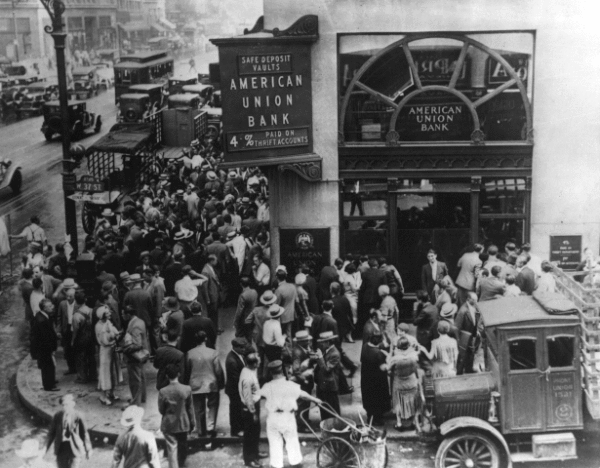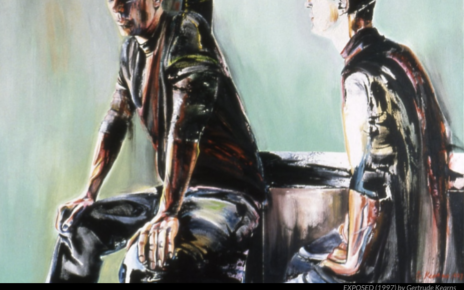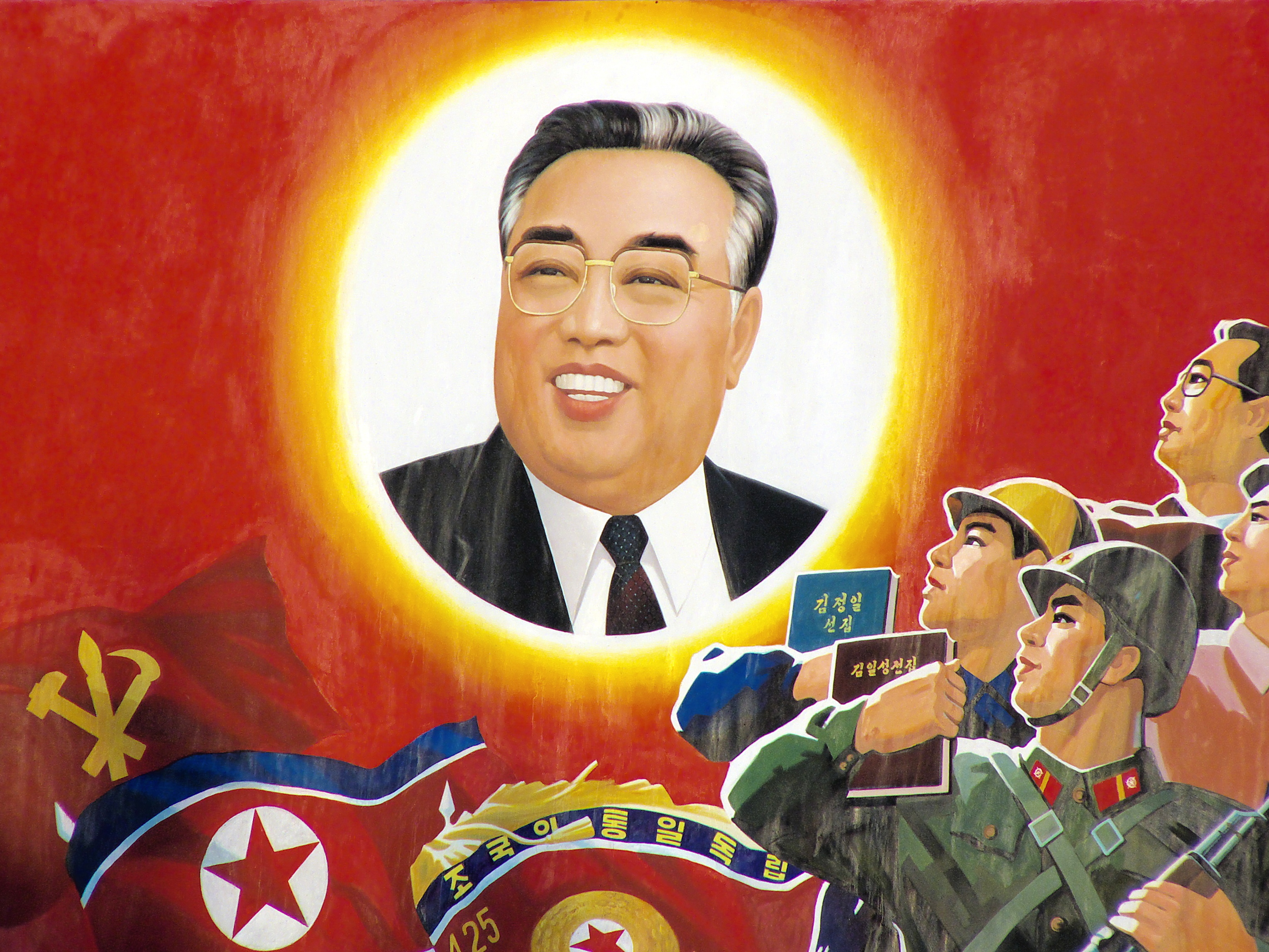After the First World War, western countries entered a phase of repair, financed by the United States. The U.S. became a creditor on the international level and entered a period where the country began hoarding large sums of gold. In these times of U.S. success, the country entered an era of unprecedented wealth. After WWI, Americans enjoyed great riches from the gains of the stock market, however, in 1929 came a major crash, bringing chaos and disruption. John Kenneth Galbraith analyzes this crash and the moments leading up to it in his book The Great Crash 1929.
Overview
The 30th President of the United States, Calvin Coolidge, served America until 1929. His superficial optimistic attitude led to an ignorance of rising issues in the American stock market and abroad. The twenties were booming for the U.S.. People were getting rich quickly and individuals were better off; poverty was, however, still widespread. From 1925 to 1929, output rose by about $7.2 billion and business profits rose at an increasing pace.
In 1927, the stock market produced steady increases in stock values. Along with these increases, Europe pegged its pound back onto the gold standard. In response, the U.S. reduced the interest rate, alongside an increase in the money supply, leaving Americans with the required funds to invest. Available funds helped purchase stocks, resulting in a rush towards the stock market. Along with the increasingly common mentality of making quick money, this increase in funds led to things spiralling out of the government’s control.
In 1928, the stock market boom changed. Americans, drunk on the mentality of making quick money, continued to invest in the stock market, leading to a constant increase in stock prices. Speculation began to rise in 1928. Prices were too high and growing too quickly andPresident Coolidge was unawareof the situation. The responsibility to deal with the situation was left in the hands of the Federal Reserve Board and the Federal Reserve Banks, however, the Federal Board showed signs of incompetence. It lacked the means to stop the boom. The Reserve Banks were depleted from financing the war, depression, and deficits. Banks depleted the reserves as they borrowed to turn profits, however increasing interest rates to make this unprofitable would create panic. Other sources of lending money appeared, limiting the control of the money supply.
By autumn 1929, the United States entered a recession. The recession was reflected in the stock market, bringing about the crash. Americans were optimistic, thinking the declining prices would once again rise. Only after the crash was the decline seen as a continuous phenomenon. The downturn of indexes alongside the collapse of Clarence Hatry, a financial empire, is often seen as the source for popping the bubble, but there were many factors at play. Investors were not experienced with a declining market. On Monday October 21st, 1929, the ticker indicating changes in price, fell behind, creating massive uncertainty.
October 24th was the first day of the panic of 1929, called Black Thursday. The ticker showed signs of collapse. By 11 am, the market had entered a state of panic; all swarmed to sell. By 11:30 am, the police were dispatched to maintain peace at Wall Street. The nation’s most powerful financiers convened a meeting and decided to pool resources to support the collapsing market. The decision helped settle the panic by noon. Trading continued normally for the next few days, however, the worst was yet to come.
Black Thursday had increased uncertainty to higher levels. Americans began to lose trust and no longer believed that bankers would be able to prevent a fresh crisis. A few days later, October 29th was judgement day for the New York stock market. Prices dropped lower than ever before. There were more sellers than Black Thursday, but no buyers. Values fell and margin accounts liquidated, leading to the interference of New York banks.
In response to the market, the Federal Reserve Banks reduced the rediscount rate by one percent, dropping it to 5 percent. Reserve Banks also responded by purchasing bonds to increase the money supply, reducing interest rates. Things were chaotic. Trusts began buying their own stocks to raise their stock value, however, the implications of such foolish actions in a selling market were not shown until much later. The market slump affected the entire country, reducing trade and declining output throughout the economy.
What the book does well
The Great Crash 1929 provides a great overview for anyone who is not informed on the 1929 stock market crash. The book does not take a technical route and aims to stay away from economic theory and financial models. The book is designed as a representation of history and the events that took place, avoiding speculation about what should have been done. Galbraith captures the era perfectly, providing a month by month analysis of events that took place before and after the 1929 crash. His method of telling his story allows the reader to get a detailed description of what happened and experience what it was like living through the crash.
The narrative allows individuals to gain a sense of the turmoil that took place during this time of crisis. The stock market crash ruined people. Americans were committing suicide in alarming numbers, with downtown hotel clerks asking guests if they “wished the room for sleeping or jumping”. The suicide rate increased in 1929 and continued to rise until 1932. Stories of self-destruction became common in the paper. This image of panic and self-destruction allows readers to feel confident in our current models and government system. A repeat of 1929 was prevented in 2008 and the Canadian government continues to take appropriate action during the COVID-19 pandemic.
The book creates a very vivid image of Americans in the early 20th century, showing the dangers of wishful thinking and incompetence. The image makes the reader reflect on current systems and their current views of the world; the book makes readers indulge in self-reflection. For example, Galbraith creates a very clear image of the world of American make-belief. The desire to gain riches and become wealthy with minimal effort was dominating American households in the early 1900s. American incompetence allowed this wishful thinking to continue, leading to the disaster of the stock market boom. The book helps readers see flaws in our current system and warns of repeating the errors of the past.
Drawbacks to the book
The Great Crash 1929 provides a great overview of the crisis that took place, however, the day by day analysis may get tiresome. The book provides information on monthly stock price increases and declines, however, a chart at the end with all the data would have made it easier to follow. The lack of charts for the stock prices made it difficult to get an overall image of the change in prices and their effects. A vital part of the story was undermined as it is difficult to observe and visualize the consequences of fluctuating prices.
The book provides a great description of the situation in America, however, is lacking when telling the global story. The stock market crash did have the largest impact on Americans, however global situations were not stressed as much as one would like. The book also gave little attention to the implications of the global market on the effects of the United States stock market and government. In 1925, Winston Churchill pegged the European pound back onto the pre-WWI gold standard. Gold left Europe and America began accumulating wealth; in other words, gold flowed towards America. This led to Montagu Norman making it easier for Americans to gain access to credit, helping cause the boom. The implications of the gold standard are not explained and limited within this book. The effect of the gold standard on monetary policy should have been analyzed more. Europe’s actions impacted the international market immensely, demonstrating that more attention should have been brought to this issue.
Concluding Thoughts Galbraith has written a fantastic book. The book highlights all the important events leading to the crash month by month and creates a great narrative for the chaos that followed. It is a short read directed at telling a story compiled using many sources and viewpoints. Galbraith provides a short index at the end that allows readers to continue exploring the topic if they would like. The narrative allows readers to connect the situation to current events as well. The lessons taught by the 1929 crash are scattered throughout the narrative and allow readers to learn from the mistakes of the past.
Photo: An American Union Bank crowded during the Great Depression, via Wikipedia. Licensed under Public Domain.
Disclaimer: Any views or opinions expressed in articles are solely those of the authors and do not necessarily represent the views of the NATO Association of Canada.




